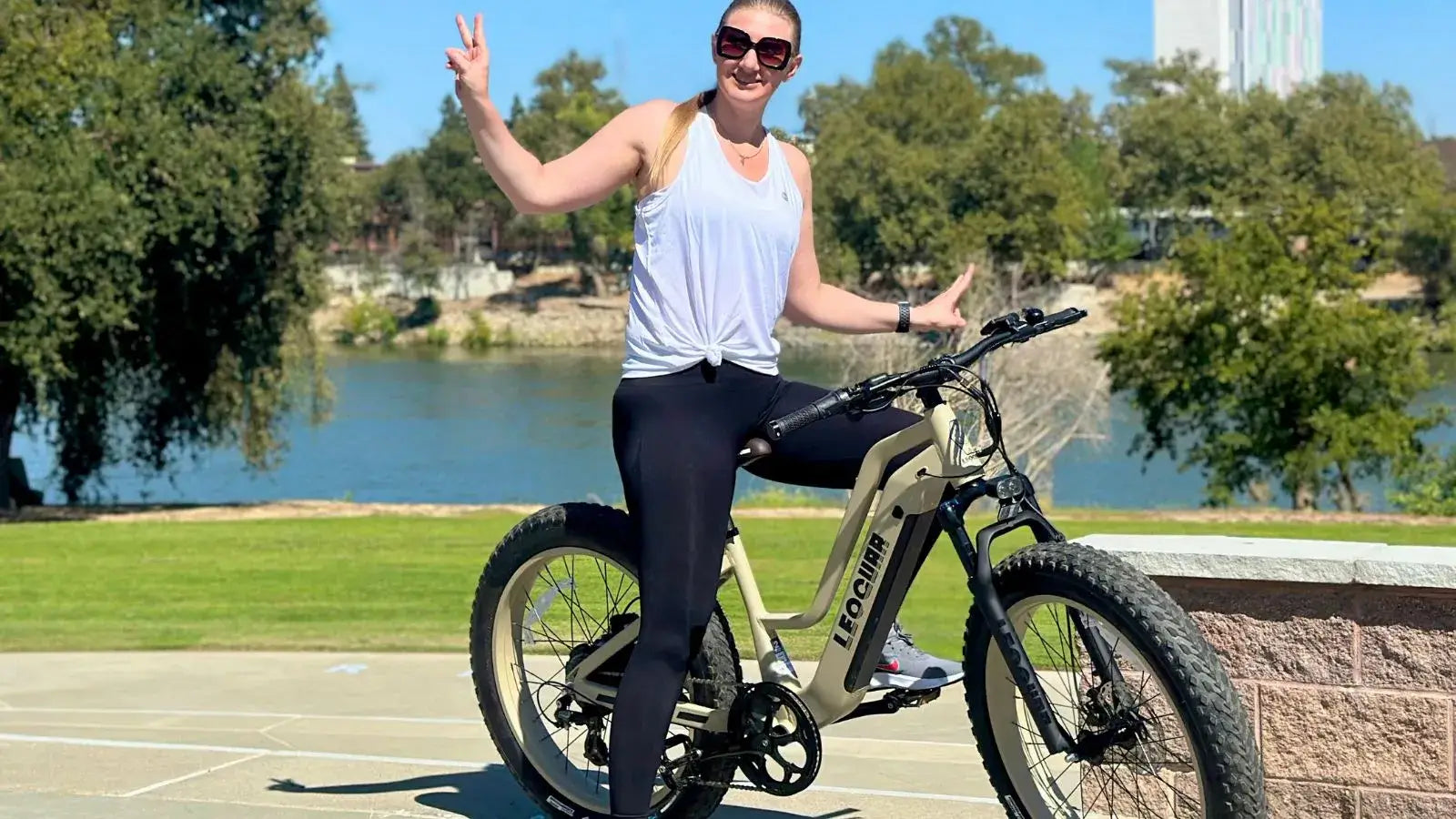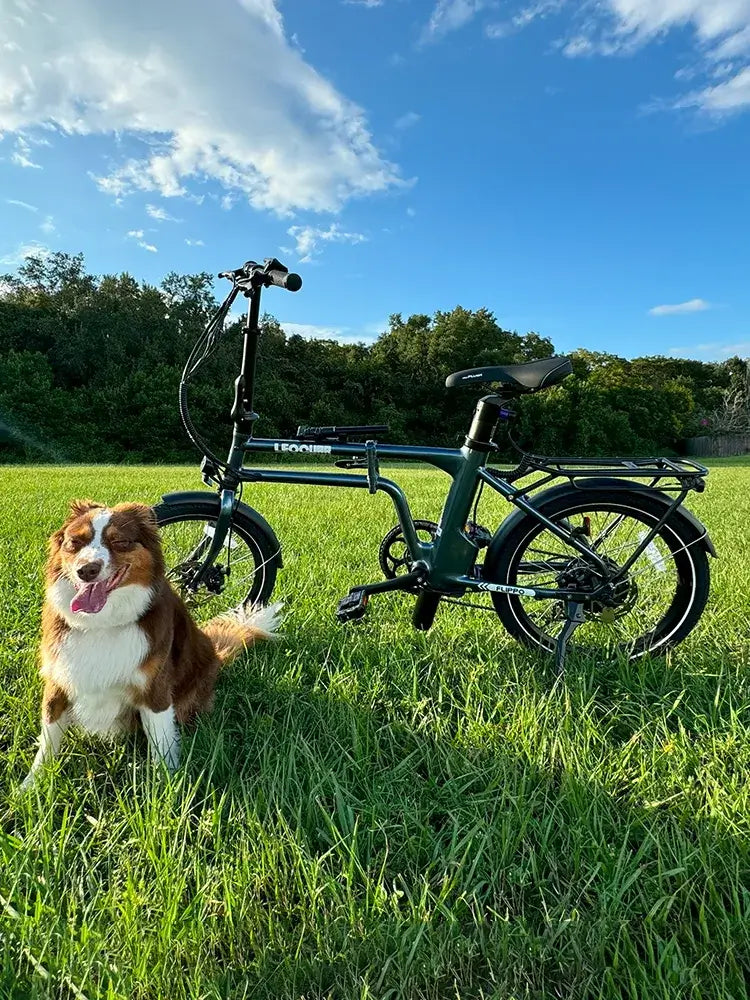
eBike Throttle Replacement: Complete Guide & Control Tips
Understanding Throttle Control
A broken e-bike throttle can stop your ride completely. But this is a problem you can often fix yourself with the right knowledge and tools. Before you pick up any tools, you need to understand what you're working with. This knowledge helps you find the real problem and make smart choices about repairs.
What is a Throttle?
An e-bike throttle is a control on your handlebar. It makes the motor run without pedaling, just like a gas pedal in a car. When you use the throttle, it sends a signal to your bike's controller. The controller then tells the motor how much power to give you based on how much you press or twist the throttle.
Inside the throttle is usually a Hall effect sensor. As you move the throttle, a magnet moves closer to or farther from this sensor, which changes the voltage signal sent to the controller. Low voltage means less power, and higher voltage means more power. It works like a dimmer switch for lights, giving you smooth control over your speed.
Main Throttle Types
E-bike throttles come in three main styles. Each one feels different when you use it.
Thumb Throttle: This is a small lever you push with your thumb. It lets you keep a full grip on the handlebar, which reduces wrist pain on long rides, but some people with small hands find it hard to use for a long time.
Full-Twist Throttle: This works like a motorcycle throttle where you twist the whole grip. Many riders find this easy and natural to use, but there's a higher chance of turning it on by accident.
Half-Twist Throttle: Only the inner part of the grip twists while the outer part stays still. This gives you a good balance between the other two types, but it's not as common on new bikes.
Throttle vs. Pedal-Assist
You need to know the difference between a throttle and pedal-assist. A throttle gives power whether you pedal or not, while pedal-assist only helps when you're already pedaling.
This difference matters for bike laws. In the United States, e-bikes fall into three classes: Class 1 has pedal-assist only up to 20 mph, Class 2 has a throttle up to 20 mph, and Class 3 has pedal-assist up to 28 mph. Knowing your bike's class is important because it affects where you can legally ride. Some trails don't allow throttle bikes.
Diagnosing a Faulty Throttle
Before buying a new part, make sure the throttle is really the problem. Wrong diagnosis wastes time and money.
Common Failure Symptoms
A failing throttle shows clear signs. Look for these problems:
No motor response when you use the throttle, but pedal assist still works. You might also see jerky power that isn't smooth or the motor running at full power even when the bike just turns on.
Physical damage like cracks or cut wires also points to throttle problems. Some bikes will show error codes on the display when the throttle fails.
Simple Diagnostic Checks
You can do basic checks at home to find the real issue. Start with a visual inspection of the throttle housing and wires. Look closely at the throttle for cracks or damage. Follow the wire down to check for cuts or pinch points, paying special attention to the connector at the end.
The connector fails often and is usually a small plastic plug with 3 to 6 pins. Unplug it carefully and check both ends for bent pins, rust, or dirt and water damage. Many problems get fixed just by unplugging and plugging the connector back in securely. If water got inside, let it dry completely before reconnecting.
The Compatibility Checklist
Choosing the right replacement is the most important step. E-bike parts don't work with all bikes, and using the wrong part can damage your controller.
Why Compatibility Matters
E-bikes are systems where all parts must work together. The controller expects specific signals from the throttle, and if the new throttle sends wrong signals or uses different connectors, nothing will work.
Your 4-Point Check
Use this checklist to make sure the throttle you buy will work. Write down your bike's specs before shopping.
System Voltage: Find your bike's voltage on the battery, charger, or manual - common voltages are 36V, 48V, and 52V. The throttle must match this voltage to work safely.
Connector Type: Unplug your throttle and take a clear photo of the connector. Count the pins (usually 3, 5, or 6) and note the shape and color - common types include JST-SM (colorful, rectangular) and Higo/Julet (black, round, waterproof).
Signal Type: Most modern e-bikes use Hall effect sensor throttles. The connector must match exactly, and the internal wiring must also match.
Physical Fit: Measure your handlebar diameter where the throttle mounts - standard is 22.2mm or 7/8 inch. The new throttle clamp must match this size to install securely.
The Replacement Guide
With the right replacement throttle ready, you can start the installation. This process is simple and needs only basic tools.
Tools and Safety
Gather your tools and put safety first. Always turn off your bike and remove the battery completely before starting work.
You'll need Allen keys, a Phillips screwdriver, wire cutters for zip ties, new zip ties, and rubbing alcohol or compressed air for grip removal. Safety comes first - never work on a powered bike.
Step 1: Remove Grip
For twist throttles, the throttle is also the grip. For thumb throttles, remove the grip next to it first. If the grip has a locking ring, loosen the Allen bolt and slide it off. For press-on grips, spray rubbing alcohol under the edge or use compressed air to break the seal.
Step 2: Remove Old Throttle
Find the clamp screw on the old throttle and loosen it until the throttle moves freely. Don't remove the screw completely. Follow the throttle wire to its connection point and cut any zip ties holding it. Unplug the connector - it might have a small latch to press.
With the wire disconnected, slide the old throttle off the handlebar. Clean the handlebar area and compare the old and new connectors one more time.
Step 3: Install New Throttle
Slide the new throttle onto the handlebar in a comfortable position. Tighten the clamp screw firmly but don't overtighten and crack the plastic. Route the wire along the same path as the old one. Connect the new throttle's connector to the bike's connector until you hear or feel it click into place.
Step 4: Re-install and Tidy
Put the handlebar grip back on and secure it. Use new zip ties to secure the throttle wire neatly. Leave enough slack in the wire so the handlebars can turn fully without pulling the cable. A tight cable is dangerous and can break during turns.

Post-Installation Checks
After installation, do final checks to make sure everything works safely. Don't skip these steps before riding.
The Safety Test
Put the battery back in and turn the bike on. Before touching the throttle, lift the drive wheel off the ground using a repair stand, having someone help, or carefully turning the bike upside down.
With the wheel clear, slowly engage the new throttle. The wheel should spin smoothly and speed up as you apply more throttle. Release the throttle and make sure the motor stops right away. If your bike has brake sensors, squeeze the brakes to confirm they also cut off the motor.
Troubleshooting Steps
If the throttle doesn't work, don't worry. Check these common issues first. No response at all usually means the battery isn't on or the connector isn't fully seated. Double-check the battery switch and unplug and replug the connector firmly.
If the motor is on but the throttle does nothing, verify compatibility again. Also check if a brake lever switch is stuck, which would prevent the throttle from working as a safety feature. Erratic or backward throttle operation points to wrong internal wiring in the connector. This usually means you got a faulty unit and should contact the seller.
Conclusion: Enjoy Renewed Control
You've successfully completed an ebike throttle replacement by following this guide. You fixed your bike and learned how electric bike with throttle control systems work. This knowledge helps you handle future maintenance with confidence. Now you can get back to enjoying smooth, reliable rides with perfect throttle control.
FAQ
Q: How long does it take to replace an e-bike throttle?
A: Most throttle replacements take 30-60 minutes, depending on your experience level and how the cables are routed on your specific bike.
Q: Can I use any throttle as long as the connector fits?
A: No, the connector must match, but you also need the right voltage rating, signal type (Hall effect vs potentiometer), and proper pin configuration inside the connector.
Q: What should I do if my new throttle connector doesn't match my bike?
A: You'll need to find a throttle with the exact connector type, or you can have the connector rewired by a qualified e-bike technician, though buying the right part is usually easier and safer.
Q: Is it normal for the throttle to not work immediately after installation?
A: If you followed all compatibility checks correctly, the throttle should work right away. No response usually indicates a loose connection or compatibility issue that needs troubleshooting.
Q: Can a bad throttle damage other parts of my e-bike?
A: A failing throttle typically won't damage other components, but installing an incompatible throttle with wrong voltage or signal type could potentially damage your controller.
















































Leave a comment
Please note, comments must be approved before they are published.
This site is protected by hCaptcha and the hCaptcha Privacy Policy and Terms of Service apply.